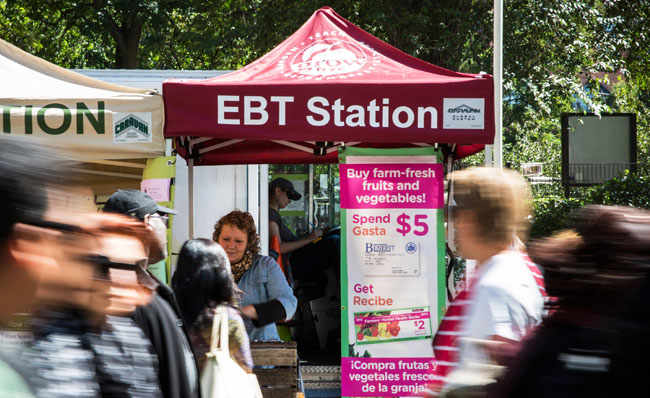
In addition to making good on his plan to put an end to federal funding for the Corporation for Public Broadcasting (which provides funding for PBS and NPR), Donald Trump’s newly-proposed 2019 budget is also proposing to replace food stamps by providing low-income families with government-picked, nonperishable food boxes.
On Monday, White House Office of Management and Budget Director Mick Mulvaney compared the idea to meal kit delivery “Blue Apron-type programs,” which Politico points out had one of the worst stock debuts in 2017 and struggles to retain customers. The “America’s Harvest Box,” which is what the proposed program is being called by the Department of Agriculture, would include non-perishable U.S. grown and produced food items such as shelf-stable milk, peanut butter, canned fruits and meats, and cereal.
The USDA is boasting that the program would save the government over $129 billion in 10 years, and while that may be all well and good on paper, potential flaws already appear glaring. For one thing, the proposal doesn’t include fresh produce and meats, which Supplemental Nutrition Assistance Program (SNAP) recipients have access to with food stamps. It’s also unclear how the program would cater to those with food allergies or religious exemptions, and just who would be picking up the tab for delivery of these boxes — particularly in hard-to-deliver rural areas.
Many are also comparing the proposal to the days of government cheese that used to be doled out to welfare recipients.
Kevin Concannon, who oversaw SNAP during the Obama administration, was aghast when he saw the proposal. “Holy mackerel,” said Concannon, who said it reminded him of when poor people had to line up and wait for local officials to dole out food and other welfare benefits. “I don’t know where this came from, but I suspect that the folks when they were drawing it up were also watching silent movies.”
Jordan Rasmussen, a policy associate at the Center for Rural Affairs, points out how this program would further cripple already struggling low-income areas. “This action would not only destabilize attempts to bring more healthy, fresh foods into the homes of America’s food insecure, but would keep dollars out of local grocery stores and farmers markets, which are critical assets to all communities,” she told Politico.
In 2016, SNAP supplied approximately 44.2 million Americans, or 14 percent of the population, with food assistance — many of those red-state Trump voters.
(Via Politico)
